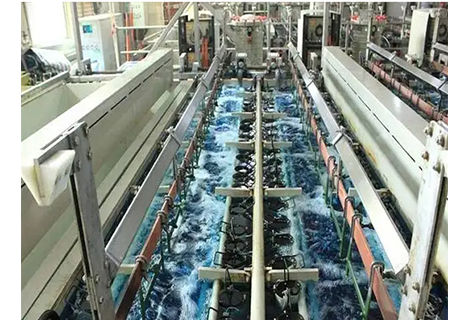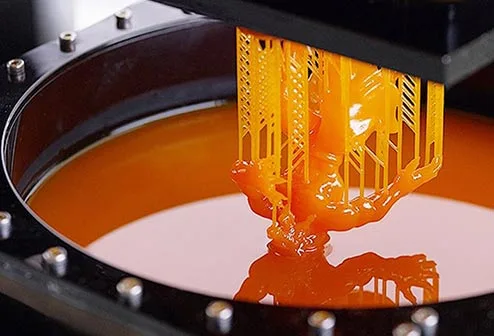There are two main categories of plastic materials: thermoplastics and thermosets, which differ in their behavior under heat. In this design tip, we present a few considerations to keep in mind when using these materials.
The difference between thermoplastic and thermoset polymers can be illustrated with an omelet.
We start with an egg, a slice of cheese and a hot pan. The egg is initially a liquid (actually a colloid, but let's not quibble) that becomes a solid in a hot pan. The cheese, in turn, is initially a solid, but becomes a viscous liquid when heated (but not when overheated).
After the ice cream is heated, it never returns to its liquid state. It remains solid, as do thermosets. Cheese, on the other hand, returns to its solid state when cooled. When heated again, it begins to flow, as do thermoplastics.
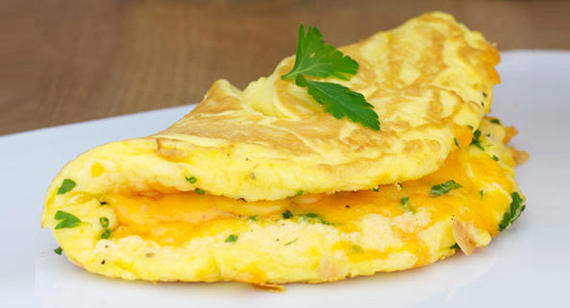
Cooking an omelet is a fitting comparison that shows how differently thermoplastics and thermosets behave when exposed to heat. Photo: MrBreakfast.com What does cooking an omelet have to do with plastics? This apt comparison shows how differently the two groups of plastic materials - thermoplastics and thermosets - behave when exposed to heat. In this month's Design Tip, you can learn more about the special features of these two groups of materials during injection molding
Remember that even a well-designed part can fail if it is made from the wrong material. Therefore, carefully consider factors such as strength, impact resistance, performance at high temperatures and other elements when selecting materials for injection molding.
Also, check the properties of common plastic types, such as acetal, acrylic, high-density polyethylene, polycarbonate (PC), polypropylene (PP) and polystyrene (see table). And if a standard material alone doesn't offer all the properties you want, look around for a plastic blend that meets your needs. After all, this is the material you want your part to be made of later. As you can see in the table on this page, the blend of polycarbonate and ABS is more robust and better suited for molding precise machining parts than ABS alone.
| Plastic type | Strength | Impact strength | Dimensional accuracy | Ability to fill in small details | Performance at high mold temperatures | Costs |
|---|---|---|---|---|---|---|
| Acetal | Medium | Medium | Fair | Fair | Fair | Medium |
| Acrylic | Medium | Low | Good | Fair | Good | Medium |
| Acrylonitrile butadiene styrene (ABS) | Low to medium | High | Good | Fair | Good | Low |
| High-density polyethylene (HDPE) | Low | High | Fair | Excellent | Good | Low |
| Polycarbonate (PC) | Medium | High | Good | Fair | Good | Medium to high |
| Polycarbonate/ABS alloy (PC/ABS) | Medium | High | Good to excellent | Fair | Good | Medium |
| Polypropylene (PP) | Low | High | Fair | Excellent | Good | Low |
| Polystyrene (PS) | Low to medium | Low | Good | Good | Good | Low |
When it comes to thermoset polymers, Richconn offers a range of liquid silicones (LSR).
LSR is a common thermoset and a useful material because of its high flexibility and resistance to heat and chemicals. Typical applications include soft-touch surfaces, gaskets and thermal insulation. Injection molders mix two components of uncured LSR to form a "liquid rubber" solution with a relatively low viscosity. The material cures under heat and forms an inseparable bond.
The following table shows the bandwagons among our general LSR materials, as well as special grades for fluorosilicone or medical and optical use. Detailed data sheets on all of these materials can be found in our materials comparison guide.
| TYPE | MATERIAL |
|---|---|
| LSR | Elastosil 3003/30 A/B, 3003/50 A/B, 3003/60 A/B, 3003/70 A/B |
| LSR (Optical) | Dow Corning MS-1002 |
When working with LSR materials, you will notice that they present a number of special design and material challenges. You should consider the following points to overcome these challenges:
Wall and fin thickness. LSR usually fills thin-walled sections with minimal problems. Depending on the size of the wall and the location of adjacent thicker sections, walls as thin as 0.25 mm are possible. Rib thickness should be 0.5 to 1.0 times the thickness of adjacent walls. LSR tolerates non-uniform wall thicknesses and sink marks are almost non-existent.
Shrinkage and pinch-off. The shrinkage rate of LSR is relatively high with an expected tolerance of 0.01 mm per mm. LSR also tends to flash (in gaps as small as 0.005 mm), which we reduce at Richconn by incorporating additional features into the mold design.
Parting lines. You can get clean LSR parts in the shortest time possible by keeping parting lines as simple as possible and reducing them to a minimum.
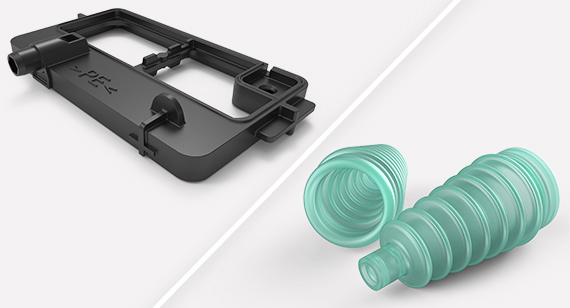
The part on the left is made of polycarbonate, a thermoplastic material often used in injection molding. The part on the right is made of liquid silicone (LSR), a commonly used thermoset material.
Undercuts. LSR can be used to injection mold parts with undercuts that are manually removed by an operator at the press. Mechanical processing steps to expose undercuts are specifically offered at Richconn.
Ejection of parts. Ejector pins are not normally used in LSR injection molding due to the flexibility and low viscosity of the material. Therefore, parts should be designed to be held onto one half of the mold when it is opened at the end of the injection cycle. The part is then demolded manually, often with the aid of air.
For thermosets, it is also important to consider crosslinking. Crosslinking is responsible for many of the properties of thermosets. It makes them tough, dimensionally stable and highly resistant to heat and chemicals (see figure below).
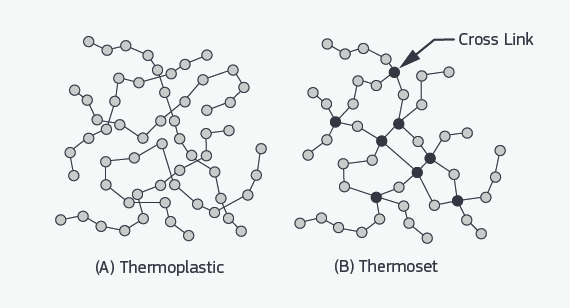
Crosslinking is responsible for many of the properties of thermosets.
A well-known example is baking molds made of rubbery silicone. The crosslinking makes them anti-adhesive and allows them to withstand oven temperatures of 200 °C without any problems - very favorable properties for baking molds. But thermosets also have their disadvantages. In harder molds, thermosetting plastics are less impact resistant than thermoplastics and can be prone to cracking.
Finally, each type of material has its own rules and guidelines. Take a look at our guide to comparing materials. There you will find a selection of hundreds of manufacturing materials.
Ultimately, Richconn can't help you choose a plastic. However, we are always available to help you weigh the properties of thermoplastics and thermosets. Simply ask one of our application engineers for advice at +86-0755-28025755 or at sales@richconn.com.cn.
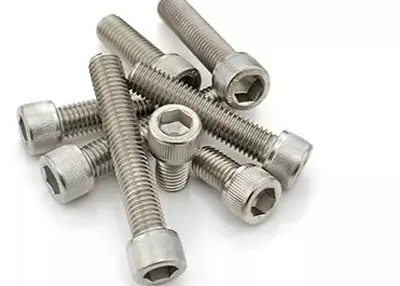 Types of Screws: A Comprehensive GuideSeptember 28, 2023Are you tired of struggling with mismatched screws or wondering which type is best for your project? Look no further! In this extensive guide, I will take you on a journey through the fascinating world of screws, from the basics to specialized types.view
Types of Screws: A Comprehensive GuideSeptember 28, 2023Are you tired of struggling with mismatched screws or wondering which type is best for your project? Look no further! In this extensive guide, I will take you on a journey through the fascinating world of screws, from the basics to specialized types.view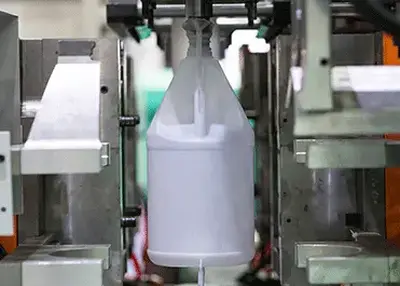 Extrusion Blow Molding: A Guide to the Process, Materials, and ApplicationsDecember 5, 2023Extrusion blow molding is a process of forming hollow plastic parts by extruding a molten tube of polymer and inflating it with air inside a mold. It is one of the most common and versatile methods of producing plastic containers, such as bottles, jars, jugs, and drums.view
Extrusion Blow Molding: A Guide to the Process, Materials, and ApplicationsDecember 5, 2023Extrusion blow molding is a process of forming hollow plastic parts by extruding a molten tube of polymer and inflating it with air inside a mold. It is one of the most common and versatile methods of producing plastic containers, such as bottles, jars, jugs, and drums.view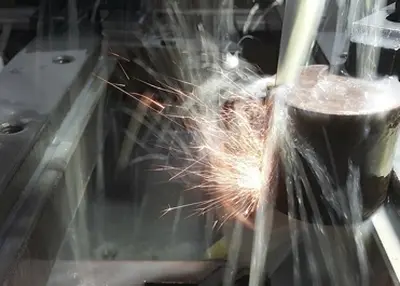 Key Points in Precision Mold Processing TechnologyJuly 21, 2023Precision mold making is a crucial process that requires specialized skills, knowledge, and tools. It involves the creation of tools that are used to produce other parts or products. The quality of th...view
Key Points in Precision Mold Processing TechnologyJuly 21, 2023Precision mold making is a crucial process that requires specialized skills, knowledge, and tools. It involves the creation of tools that are used to produce other parts or products. The quality of th...view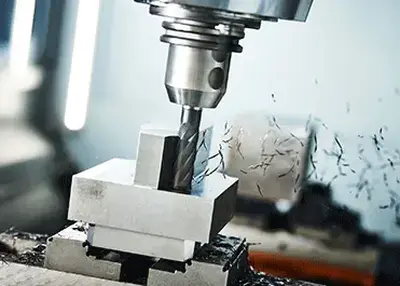 Exploring the World of High-Speed MachiningNovember 22, 2023In the ever-evolving landscape of manufacturing, the pursuit of efficiency and precision has led us to the realm of High-Speed Machining (HSM).view
Exploring the World of High-Speed MachiningNovember 22, 2023In the ever-evolving landscape of manufacturing, the pursuit of efficiency and precision has led us to the realm of High-Speed Machining (HSM).view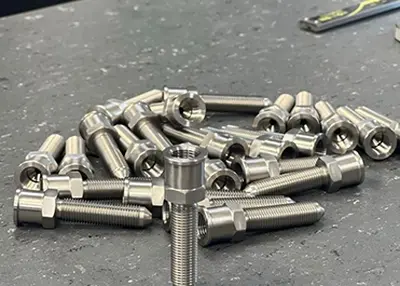 How Much Do You Know About Stainless Steel Knowledge?October 23, 2023Steel, is a generic term for iron-carbon alloys that contain between 0.02% and 2.11% carbon. When the carbon content is greater than 2.11%, it is referred to as pure iron. The chemical composition of steel can vary greatly, and steel containing only carbon is known as carbon or plain steel.view
How Much Do You Know About Stainless Steel Knowledge?October 23, 2023Steel, is a generic term for iron-carbon alloys that contain between 0.02% and 2.11% carbon. When the carbon content is greater than 2.11%, it is referred to as pure iron. The chemical composition of steel can vary greatly, and steel containing only carbon is known as carbon or plain steel.view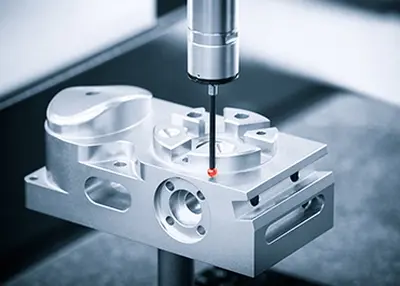 What Are the Methods of Testing the Properties of Metallic Materials?October 26, 2023Tensile testing is a common method of evaluating the strength and ductility of materials. It involves placing a specimen in a tensile testing machine, gradually applying a tensile force, measuring the stress-strain curve and determining the yield strength, tensile strength, and elongation of the material.view
What Are the Methods of Testing the Properties of Metallic Materials?October 26, 2023Tensile testing is a common method of evaluating the strength and ductility of materials. It involves placing a specimen in a tensile testing machine, gradually applying a tensile force, measuring the stress-strain curve and determining the yield strength, tensile strength, and elongation of the material.view
 EN
EN
 ru
ru 

